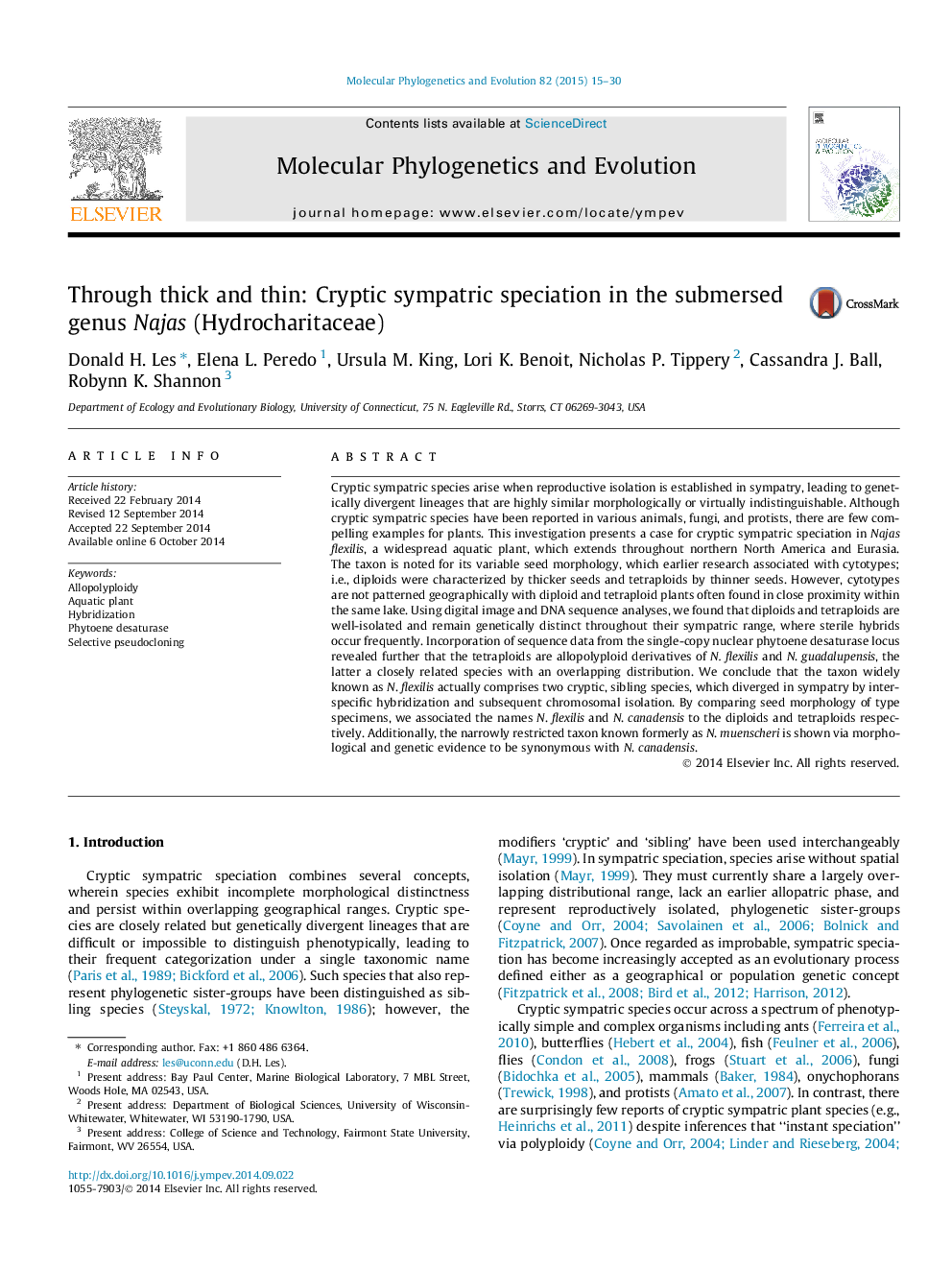| کد مقاله | کد نشریه | سال انتشار | مقاله انگلیسی | نسخه تمام متن |
|---|---|---|---|---|
| 5919006 | 1164256 | 2015 | 16 صفحه PDF | دانلود رایگان |

- Genetic variation was studied throughout the global range of Najas flexilis.
- Nuclear and chloroplast DNA sequence data identified two sympatric lineages.
- Lineages are difficult to distinguish morphologically, which requires statistical analysis of seed morphometry.
- Sequence data from the nuclear pds gene implicate allopolyploidy in the origin of one lineage.
- This study provides an example of cryptic sympatric speciation in plants.
Cryptic sympatric species arise when reproductive isolation is established in sympatry, leading to genetically divergent lineages that are highly similar morphologically or virtually indistinguishable. Although cryptic sympatric species have been reported in various animals, fungi, and protists, there are few compelling examples for plants. This investigation presents a case for cryptic sympatric speciation in Najas flexilis, a widespread aquatic plant, which extends throughout northern North America and Eurasia. The taxon is noted for its variable seed morphology, which earlier research associated with cytotypes; i.e., diploids were characterized by thicker seeds and tetraploids by thinner seeds. However, cytotypes are not patterned geographically with diploid and tetraploid plants often found in close proximity within the same lake. Using digital image and DNA sequence analyses, we found that diploids and tetraploids are well-isolated and remain genetically distinct throughout their sympatric range, where sterile hybrids occur frequently. Incorporation of sequence data from the single-copy nuclear phytoene desaturase locus revealed further that the tetraploids are allopolyploid derivatives of N. flexilis and N. guadalupensis, the latter a closely related species with an overlapping distribution. We conclude that the taxon widely known as N. flexilis actually comprises two cryptic, sibling species, which diverged in sympatry by interspecific hybridization and subsequent chromosomal isolation. By comparing seed morphology of type specimens, we associated the names N. flexilis and N. canadensis to the diploids and tetraploids respectively. Additionally, the narrowly restricted taxon known formerly as N. muenscheri is shown via morphological and genetic evidence to be synonymous with N. canadensis.
Journal: Molecular Phylogenetics and Evolution - Volume 82, Part A, January 2015, Pages 15-30